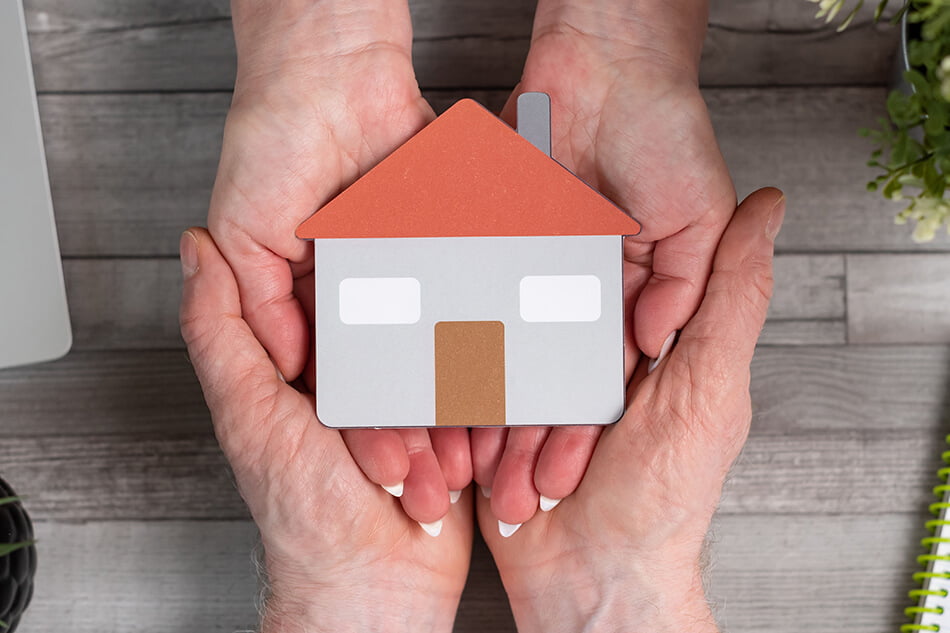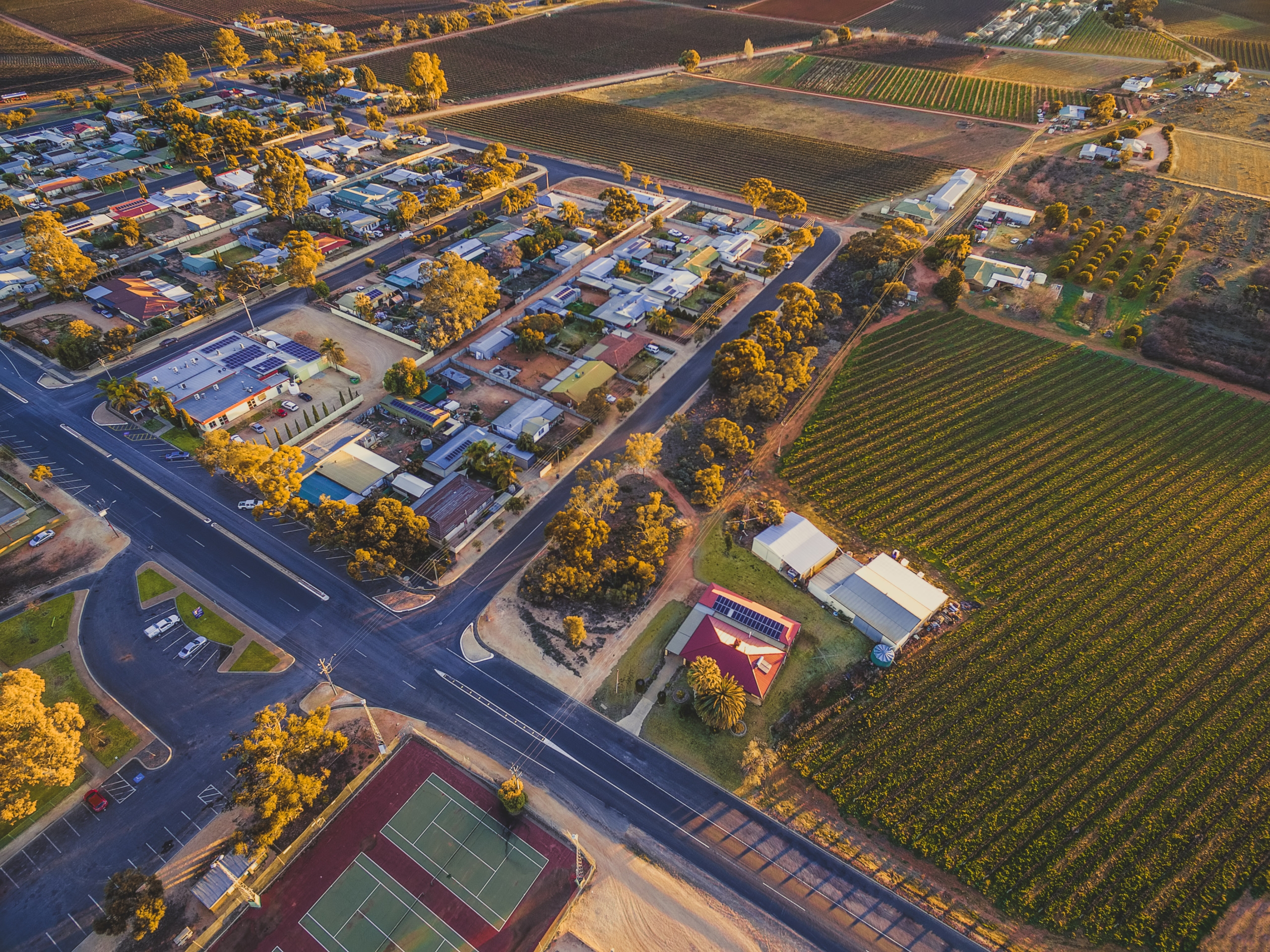Are you ready to take that next big step in your life and secure your future by getting on the property ladder? As the Australian National University (ANUPoll) reports, 75% of individuals believe owning a home is part of the Australian way of life.
The Great Australian Dream of homeownership is very much still alive today, and you may be wondering what you need to do to partake in that dream.
We understand that this may be the biggest decision you make in your life, one that is filled with many emotions and questions. Whether you’re venturing out on your own or starting a family, you’ll want to know exactly how the whole process works.
So, we’ve created this comprehensive guide that is designed to answer all your questions, make the complex terminology simple, and ultimately get you into your first home as soon as possible.
Keep reading to find a full overview of the types of loans available, a breakdown of the eligibility criteria, and everything you need to know when preparing to buy!
We will also cover the various government schemes that allow first-time buyers to purchase with a smaller deposit.

What Is The Process Of Getting A Home Loan?
There are a number of things first-time buyers should know before securing their home loan.
- Budget and get your deposit ready. It’s crucial to start budgeting to help you save as much deposit as possible. Previous evidence of effective budgeting will help demonstrate your repayment capability. The more deposit you can provide, the less money you’ll need to borrow.
- Check for any existing debts. A home buyer’s purchase should always be supported by their financial health. By eliminating, reducing, or consolidating any previous debts, you can quickly improve your serviceability ratio and credit score. This refers to your ability as a borrower to meet the loan repayments based on your loan amount, income, and other expenses.For example, if the monthly loan repayment is $2,000 and your monthly net income is $7,000, the serviceability ratio would be 29%. Keep in mind that the majority of lenders in Australia will not approve a home loan if your serviceability ratio is above 35%.
- Develop a good credit rating. Your home loan application is also going to depend on your credit rating. A good credit rating will depend on a number of factors like paying debts on time, not overapplying for credit, and lowering credit card limits.As a first-time buyer, you may have a limited or zero credit history. If so, you may need to provide a guarantor for the loan to be approved. We provide many tips on how to maintain a good credit score even during the difficult times after COVID.
- Choose a home that suits your needs. Purchasing your first home is an exciting time, but you also need to be practical. Take some time to understand your present and future goals, and how your purchase can allow you to reach them.
- What can you actually afford? When looking at the property market, pay attention to the monthly payment and total house cost. It’s not always about your home deposit. Consider the rate of property taxes, insurance, and maintenance costs that you will need to cover.
- Find an expert mortgage broker. A good mortgage broker will make the whole process easier and less time-consuming. Getting in touch with Lendstreet is the perfect way to start your journey, where we find the most suited loan to match your budget and individual circumstances.
- Preparing for your home loan appointment. Make sure you have all the paperwork ready for your first appointment. This will include evidence of your income like a recent bank statement, details of your current assets and monthly repayments, a record of household expenses, and a personal ID. It is crucial to have all the right documents required and disclosure documents to make the process as smooth as possible. This will help you get pre-approved as quickly as possible!
- Look into the government schemes for first-time buyers. Make sure you look at the various state-funded first-time buyer schemes helping applicants to get on the property ladder.

What Types Of First Home Buyer Loans Are Available?
There are 4 common types of home loans available for first-time buyers. Understanding these types of loans will help first-time buyers save on their mortgages.
Fixed-Rate Loans
A fixed-rate loan refers to an interest rate that stays the same over the entire time period of the loan. Therefore, your repayments will be protected against any potential interest rises.
A fixed-rate mortgage essentially allows peace of mind for you to know exactly what the monthly repayment will be throughout the entire loan period. With a consistent interest rate, it’s easier for you to budget your finances every month.
As an illustration, a 3-year fixed-rate mortgage will be made up of consistent and fixed monthly payments spread out across the whole 3 years. These payments are paid towards the principal (the total amount borrowed from the lender) and the interest.
Fixed loans are generally provided for shorter periods of up to five years.
Variable-Rate Loans
A variable-rate loan will fluctuate up and down over time, depending on potential interest rises. For example, interest rates may increase or decrease depending on how the lending market changes.
Variable-rate loans are considered to have more flexibility that may help you adapt to a change in your financial circumstances.
Variable mortgage rates are usually recommended for those with a flexible budget or wanting to pay off the loan sooner.
Interest-Only Loans
With an interest-only home loan, you enter an initial period in which repayments only cover the interest on the loan, not the total amount of the loan itself, known as the principal.
This means that you’ll have lower monthly payments at first, which will eventually convert into a loan with higher monthly payments.
For instance, if your 30-year loan of $300,000 is under a fixed-rate mortgage-paying principal and interest, monthly repayments will be $1,216. However, under an interest-only 5-year mortgage your monthly payments for the first 5 years will be $813. After this period, your monthly repayments will increase to $1,375.
Split Loans
A split home loan describes a loan that is divided into multiple parts. For example, you could take out a split loan mortgage with a nominated portion at a fixed interest rate, and the remainder at a variable interest rate.
This allows you to have both the peace of mind of a fixed-rate interest and the flexibility of a variable-rate interest.
With our Loan Comparison Calculator, you can check such combinations today!

What are the Eligibility Criteria For First Home Buyers?
If you’re anxious about the eligibility criteria attached to a first home loan, we’ve broken down the main factors to keep in mind:
Good credit score.
Eligibility will vary based on your credit score rating. You can get a credit report today from one of the three credit bureaus: Equifax, Illion, or Experian.
Minimum deposit.
Generally, the minimum deposit is 20%, but some lenders differ depending on the product you take. A mortgage broker can help support you through this process.
Borrowing capacity.
Each lender will have its own borrowing calculated based on its personalised credit policy. You can get to know your borrowing capacity today by using Lendstreet’s borrowing power calculator.
Never owned residential property before.
You’ll be regarded as an eligible first-time buyer if you’ve never owned a home anywhere before.
Stamp duty concession.
First-time buyers can benefit from a concessional transfer rate if the property value is below a certain threshold. All buyers are required to pay stamp duty.
Steady income stream.
First-time buyers will have to provide evidence of a consistent income stream to prove their repayment capability.

What is the First Home Loan Deposit Scheme?
The National Housing Finance and Investment Corporation (NHFIC) has created a number of state-funded schemes (also known as the first home owners grant) to help you find your perfect home sooner. These Australian Government initiative schemes are created to support eligible first home buyers in achieving the Australian dream of owning a property!
Let’s take a look at what separates the First Home Loan Deposit Scheme (FHLDS), the New Home Guarantee Scheme (NHG), and the First Home Owner Grant (FHOG):
FHLDS
Generally, first-time buyers with a deposit that is less than 20% need to pay lenders’ mortgage insurance (a one-off, non-refundable premium added to your loan). Instead, under the FHLDS, you’re only required to contribute 5% and the NHFIC will cover the other 15%, without paying lenders mortgage insurance.
First-time buyers are able to apply for this loan to purchase an eligible new or existing property from a participating NHFIC lender. The FHLDS provides up to 10,000 loans per financial year.
NHG
Similar to the FHLDS, this scheme is allowing first-time buyers to contribute only a 5% mortgage but this time for new homes only or if building a home.
FHOG
This grant is a one-off payment to assist buyers in purchasing or building a new property. The grant offered can reach up to $10,000 depending on the amount needed to finish the construction, and only one grant is payable per transaction.
As a first-time home owner, you may qualify for this grant if purchasing or building a new house. Also, a house that has been substantially renovated can be considered to be a new property.
Are You Eligible For The FHLDS?
Eligibility requirements for the First Home Loan Deposit Scheme will depend on whether the residential property purchased fits with the NHFIC guidelines. The eligibility requirements are as follows:
- Open to Australian citizens who are at least 18 years of age.
- Not have owned or invested in a property before.
- Have a single taxable income of up to $120,000 per annum or a combined couple income of up to $200,000 per annum.
- Be considered a couple through marriage or as a de facto relationship.
- Have a maximum property purchase that suits the NHFIC’s property price threshold tool
What Type Of Home Can I Buy?
According to the NHFIC, the FHLDS is only available for residential property and not investment property. More specifically, a residential property within their guidelines translates as:
- An existing house, apartment, or townhouse.
- Vacant land and with a separate contract to build.
- A house with a land package.
- An off-the-plan apartment.
What Are The Important Timeframes?
Depending on your property type, specific dates and requirements will be added to your grant. That’s why the NHFIC offers a dedicated postcode search tool.
Timeframes will also differ depending on your type of home. You can find all this information on the First Home Loan Deposit Scheme fact sheet.
Are You Eligible For The New Home Guarantee Scheme (NHG)?
In addition to all FHLDS eligibility requirements, applicants of the NHG must either:
- Purchase a dwelling constructed after January 2020.
- Purchase an off-the-plan contract dated after October 2020.
- Or, obtain a house and plan package that is dated after October 2020.
Are You Eligible For The First Home Owner Grant (FHOG)?
Eligibility for the FHOG grant is not means-tested so income will not affect your chances. Instead, eligible first home buyers need to meet the following factors:
- Be 18 years of age or over.
- Open to Australian citizens or permanent residents.
- Have to live in the property for at least 6 months.
- Never had previously owned a home in Australia.
The eligibility will also depend on the state and territory you’re planning to buy-in. You can find out whether you qualify for the grant via the FHOG portal.
For full details about the FHOG grant, book an appointment with us.
How To Apply
Applications for the FHLDS, NHG, or NHOG are made directly with participating lenders and not with the NHFIC. You will also need a relevant Notice of Assessment for the previous financial year
At Lendstreet, we can talk you through all the details about these government grants.

Preparing To Buy
Remember all the necessary steps you need to take when preparing to buy.
- Check your credit score. A credit score check will make your application easier, so a broker can understand your financial situation.
- Find a loan that is right for you. Speak to Lendstreet brokers today to find all the loan options available for you.
- Search for that dream home. This is the fun part. Start researching the market and the suburbs you may want to live in. When organising any house viewings make sure to use our House Inspection Checklist.
- Make an offer. Here at Lendstreet, we can discuss finance, inspection, and bidding before you make your offer. As mortgage brokers, Lendstreet can provide you credit assistance on all your requirements and have access to all lending criteria and credit products of the banks and non-banks.
- Home loan appointment. Let’s get you booked in at Lendstreet, and discuss the processes of conditional, unconditional, and credit approval (and work towards gaining that loan offer).
- Find a loan type that suits you. Make sure you know what type of loan is right for your financial situation and whether this may change in the future. For peace of mind, pick a fixed-rate loan. For more flexibility, let’s look at a variable-interest loan. Or, you may want a bit of both so let’s see about a split loan.
We’re Here To Help.
The first mortgage can be stressful to plan, but we know you can do it and we’ll help to show you how. At Lendstreet, we create a stress-free environment by detailing all the options available.
We understand that you may have a lot of questions that need answering, and that’s why we’re here to get them answered, so you can get on with your personal objectives.
We aim to fast-track the home buying process by providing personalised expert advice and offering ongoing support throughout.
We have seen every situation and problem facing a first-time buyer, and have guided thousands of customers through every step of the way, whether finding new couples their dream home or dedicating ourselves to a family home guarantee.
Never Lose Sight Of Your Savings Goals With Lendstreet
When you’re preparing to buy, make use of guidance resources that can help you save for that dream first home. At Lendstreet, we don’t just provide expert advice, but we have many online resources for first-time buyers
With our Deposit Planner, Expense Planner, and Budget Planner you can smash all your saving goals! Using our calculators, you can cut back on unnecessary expenses. A top tip is that recurring or monthly payments tend to seriously affect those saving for a home deposit.
Boost Your Borrowing Power With Us
Make sure to use our loan and Borrowing Power calculators so you can know exactly how much to borrow for your first home. As soon as you calculate what you can afford, you can begin to find properties that fit your budget!
Ready To Start?
Are you ready to get started today? Our specialised team is experienced in first time buying. At Lendstreet, we employ a simple 5 step process to help you control any overwhelming feelings.
- Firstly, we’ll discuss your situation and goals.
- Next, we’ll search for the home loan that suits you best.
- Then we’ll get you pre-approved and focus on the right properties in your budget.
- We can then get onto the exciting part, house hunting!
- Finally, we’ll make an offer and buy together.
If you’re ready, let’s get started today!

Get the latest news and updates from Lendstreet
Join and subscribe to our newsletter.
FAQ
How much deposit is needed for a first-time buyer?
Generally, first-time buyers will need a 20% deposit, and lenders that accept a lower deposit may charge a lender’s mortgage insurance (a one-off, non-refundable premium added to your loan). With the introduction of state-funded buying schemes, you can now put down a deposit that is equal to at least 5% of the property price threshold.
How do I get my first home loan?
In order to get your first home loan, you need to meet the minimum deposit requirements, check your credit score, and calculate your borrowing capacity. Then you need to find what home fits your needs, what you can actually afford, and a mortgage broker or bank loan officer that can help you secure the loan.
What is a first home buyer loan?
There are many different types of first home buyer loans, including fixed-rate loans, variable-rate loans, interest-only loans, and split loans. The Australian government also provides a First Home Loan Deposit Scheme that aims to get first home buyers on the property ladder quicker with 5% deposit rates. These schemes allow buyers to avoid lender’s mortgage insurance (a one-off, non-refundable premium added to your loan).
Can I buy a house with a 5% deposit?
Yes. You can buy a house with a 5% deposit but you may have to pay the lender’s mortgage insurance. However, you won’t need to with the new state-funded First Home Loan Deposit Scheme. While the average deposit amount is 20%, it’s now possible to buy a home for much less. These loans are designed to help first-time buyers get on the property ladder.
Take our First Home Buyer Loan Guide with you.
Print, share, and read it offline.
Download Now
Schedule a call to one of our expert mortgage broker
Ask our expert mortgage brokers anything about home loans.
Related articles
Applying for a home loan isn't a walk in the park for most first home buyers, especially when you're ...
Homeownership is a long, challenging, and expensive road, along which you’ll encounter expenses such as stamp duty, land tax, ...
With the Australian real estate market taking a hit in 2022 thanks to increasing mortgage rates, buying a house ...









